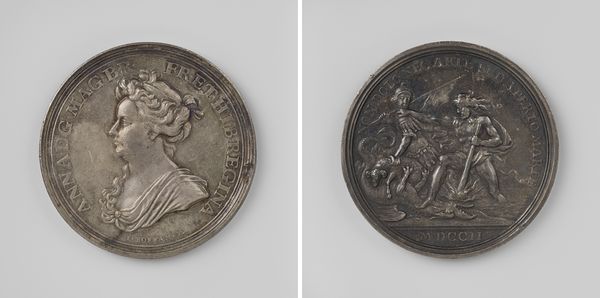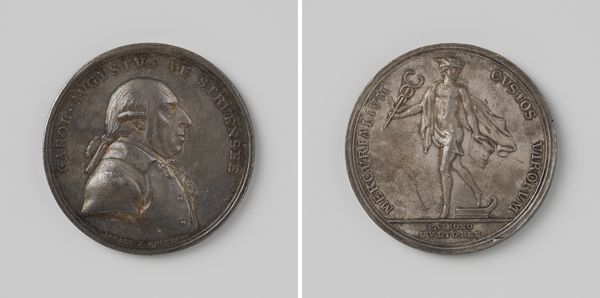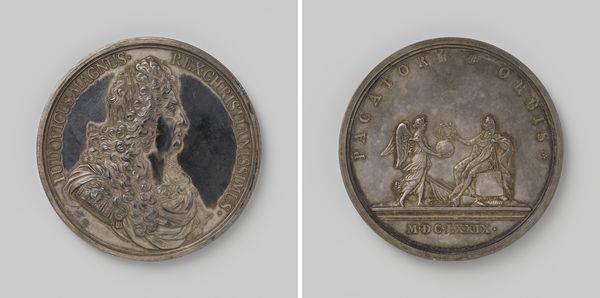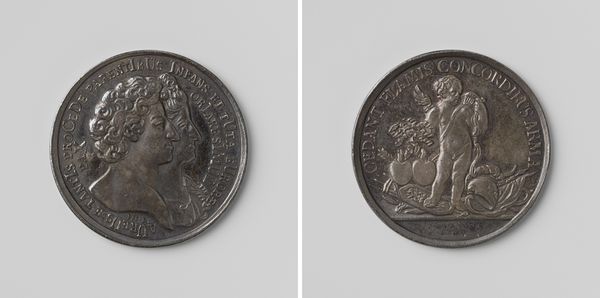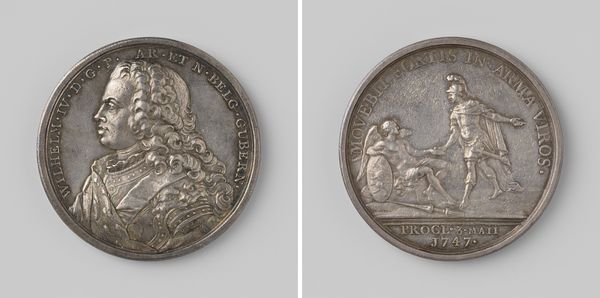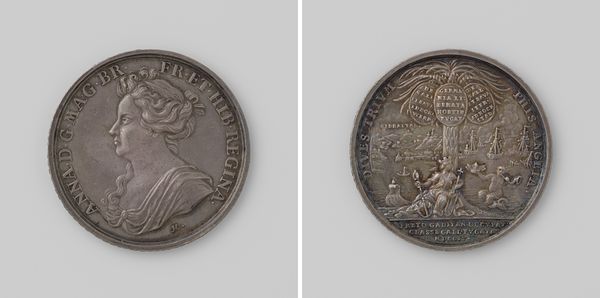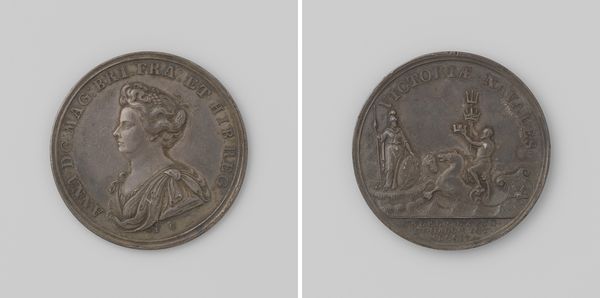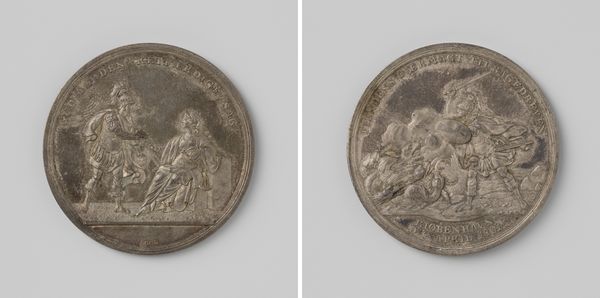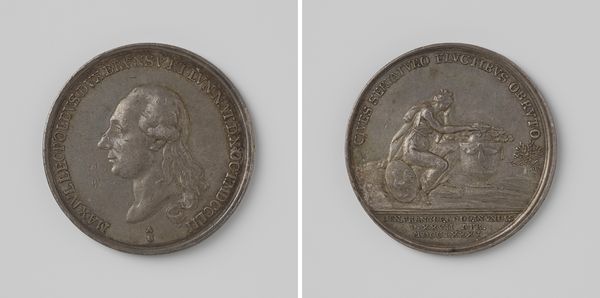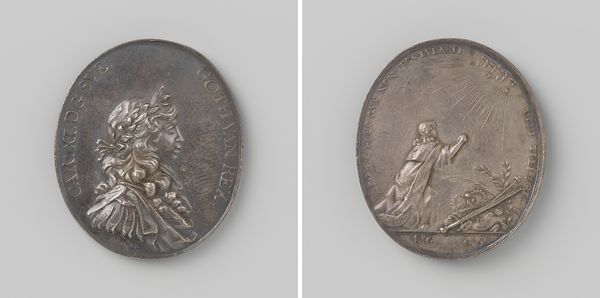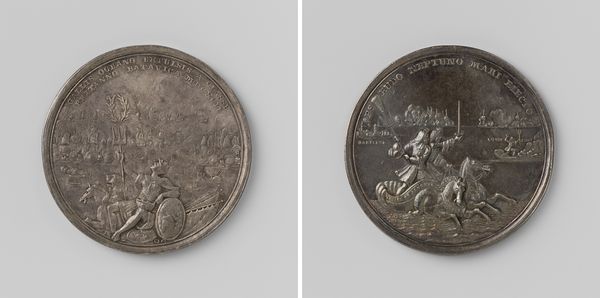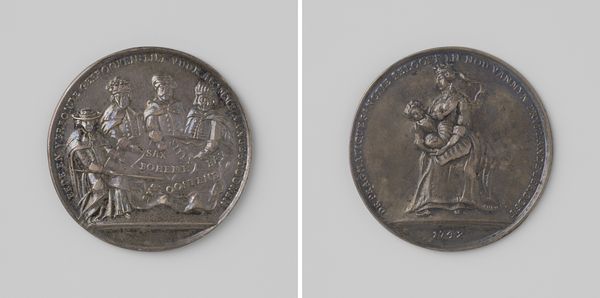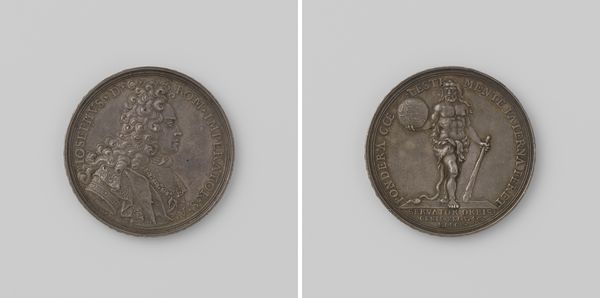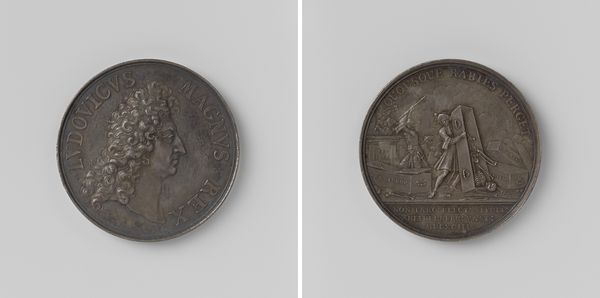
metal, relief, bronze, sculpture
#
portrait
#
baroque
#
metal
#
sculpture
#
relief
#
bronze
#
sculpture
#
ceramic
#
history-painting
#
statue
Dimensions: diameter 4.1 cm, weight 39.21 gr
Copyright: Rijks Museum: Open Domain
Curator: "60.000 Germans Driven Across the Rhine by the French," a bronze relief by Jean Mauger, crafted between 1699 and 1703. It's a striking piece, almost feels like a coin of some kind, commemorating a moment in history. How would you interpret the visual impact of its form and texture? Editor: It definitely feels like a coin. I am interested to hear how we can examine its process, materials, and social context in order to understand it. How do we dive deeper into the piece and understand the materiality and the act of consumption. Curator: Well, considering the material - bronze - and its replication as a coin, think about how that changes its function. It moves beyond a singular art object to something potentially mass-produced, intended for circulation. It's a tangible object commemorating power. So, the question is: how does the inherent value of the metal itself become intertwined with the value of the political message? Who would have been handling these objects? What type of metal were they manufactured from? Editor: So, it is like propaganda in a physical form, using valuable materials to enhance its importance? Did the material act as a display of value for its commissioner? Curator: Precisely! And this isn't just about showcasing royal might; it’s also about the labor involved – the mining, the smelting, the engraving, the striking of the coin itself. Each stage tells a story about the economy and society of the time. How do you think these layers of material and labor impact its message? Editor: I think that is incredibly powerful. The layering of value enhances the coin with many elements adding weight to its cultural and monetary status. You are showing me the layers upon layers that exist to convey the intended message. Thank you for this perspective! Curator: My pleasure. Always remember to ask about who made it, how, and why that medium was chosen to see past what is shown to be an idealized symbol, so as to interpret the artwork from a new and enriched point of view.
Comments
No comments
Be the first to comment and join the conversation on the ultimate creative platform.
